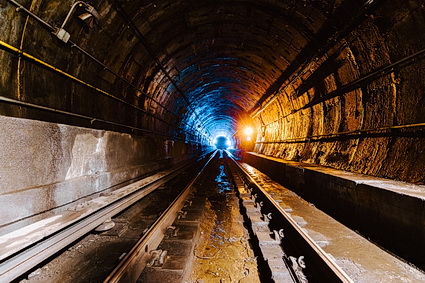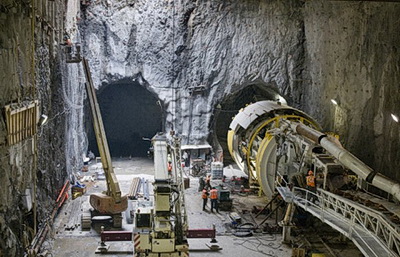
For those who love big cities (and even smaller ones), there’s no doubt you have ridden on one of their mass transit lines. With that said, have you ever wondered about the amount of engineering that has gone into building one? Well, here we will give you some basic information as to how they are constructed.
There are two basic methods to subway construction: “cut and cover” and the other is called “deep bore.” Cut and cover refers to the complete opening of the street, down to where the subway would be built and deep bore refers to the burrowing strategy previously discussed in our Tunnel Boring article.
To determine which method is going to be used, an engineering and environmental review is necessary, which includes logistics, underground water determination, earth material, demographics and of course, costs, not to mention the bureaucracy of working with the different city agencies to determine where all the utility lines, water pipes and potential other tunnels are located.
This bureaucracy alone could take months or even years, And if any of these factors become obstacles, then additional planning would be required. The bottom line is that this whole procedure is a great undertaking and can get very complex.
So with this introduction, let’s delve into describing the engineering process by which each of these methods would be used.
Cut and Cover Method of Building a Subway

This method is found in the building of some of the older subway systems, such as the Paris Metro, London Underground and the NYC subway. With this method, the pavement of the street is completely removed and then a hole is dug down into the ground.
“Cut and cover” is considerably cheaper than the “deep bore” method; however, the dig must parallel the street, so there is no room for more sophisticated planning, like curved tracks that fork off to some desired locations, unless the street above does the same.
Another undesirable factor is that “cut and cover” results in large holes in the street significantly causing traffic nightmares, as well as major inconveniences for store owners along the route.
Deep Bore Method
The boring machine is a sophisticated and expensive apparatus that cuts through the underground dit by using circular spinning blades. The advantage this has over “cut and cover” is that they do not have to follow the street grid above, allowing much greater flexibility in the design of the subway lines, as well as not have to dig big holes along the route. The boring method is slow, but efficient and cuts through the earth at a rate of about fifty feet per day.
The disadvantages are that the costs are significantly higher than cut and cover, where $150 million would be a medium price.
How the Subway Construction Method Is Decided
As mentioned, there are so many factors to consider when building a subway line, but the number of subway lines and the cost factors involved would be the major considerations.
For example: After extensive analysis of which method would be better to construct the Second Ave Subway in Manhattan, it was decided that the TBM would be more efficient, based upon the fact that cut and cover would cause so much economical damage, the boring method would be more practical, even though it is more expensive.

Just lowering this giant machine into the tunnel is a major task, not to mention expense, but it is worth it in the case of big-city construction.
Another major consideration was the amount of interruption and financial damage the cut and cover method would have caused, especially on a congested and commercial road like Second Ave. where the upper east side and midtown Manhattan would be commercially interrupted.
Considering how often there would have been complaints, especially in this time period, where community demonstrations are the norm, more and more TBM usage is becoming the preferred method, so as not to disturb life above ground. However, cut and cover construction may still be considered if the soil conditions are not up to standard.

An example of how the political consequences of cut and cover road disruptions can escalate, take a look at Vancouver B.C.’s recently opened Canada Line. A lawsuit was taken against the city of Vancouver and the plaintiff, a retailer with a store along the subway route where won C$600,000 after cut and cover caused major financial hardship. Following that lawsuit, an additional 41 plaintiffs have taken legal action to recover financial damages.
What the Future Holds
We are now in the 21st Century and with technology streaming at a rocket pace (e.g. artificial intelligence, at home video conferencing, sending a man to Mars) it will only be time before new engineering technologies will lead to faster, lighter and much less expensive boring machines. Then if you think some cities have excellent transportation facilities now, wait till these new machines come along and open the door to even more elaborate and reduced financial expense.
